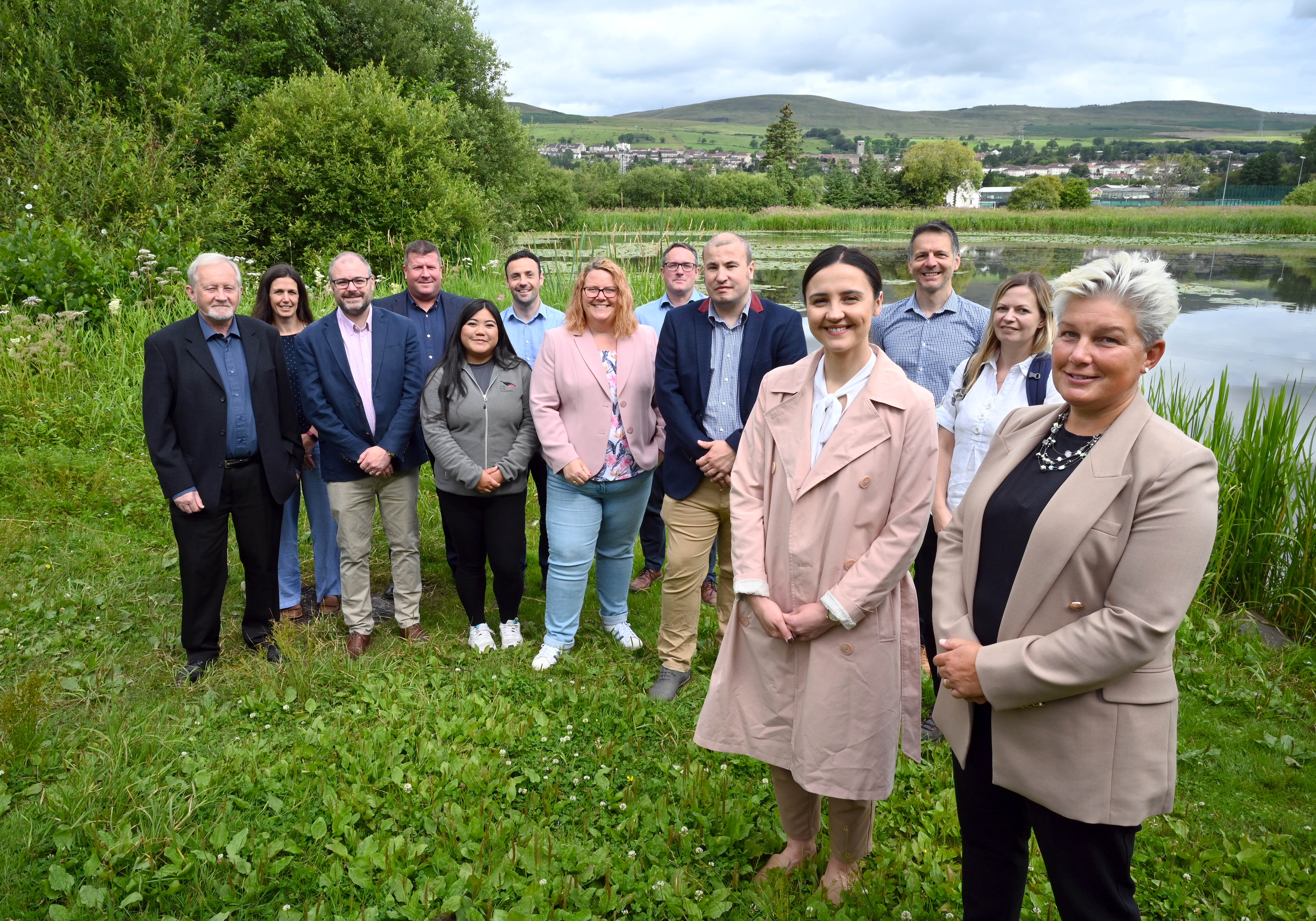Salmon have returned to the Garrell Burn in Kilsyth for the first time in 100 years, as a result of a river restoration project by the council and the Scottish Environment Protection Agency (SEPA).
Work at Dumbreck Local Nature Reserve has seen the re-naturalisation of 600m of the Garrell Burn with two new fish passes created, improvements to the wetland habitat, new paths created, two bridges replaced and a new one installed, and two boardwalks upgraded.
Monitoring by Clyde River Foundation has identified salmon fry upstream from the fish passes at Burngreen Park. The substantial work has also helped improve the river habitat from ‘poor’ to ‘good’ under Scotland’s River Basin Management Plan.
The project has also improved the nature reserve to conserve the wetland habitat and species such as invertebrates, water voles and wetland birds, and the two new fish passes are designed to allow migration of salmon as well as sea trout and eels.
Minister for Environment and Land Reform, Mairi McAllan joined elected members and representatives from the council, SEPA, contractors WSP and George Leslie and community groups at Dumbreck to see the results of the work carried out.
Environment Minister Mairi McAllan said: “This is a landmark day for the local community as, with support from the Scottish Government’s Water Environment Fund and SEPA’s River Basin Management Planning, North Lanarkshire Council has been able to restore an important ecological site and bring back wild salmon to the Garrell Burn for the first time in a century.
“Removing barriers to fish migration, providing salmon with free access to cold, clean water, is a key action in our Wild Salmon Strategy, which sets out a vision for flourishing populations of wild Atlantic salmon in Scotland.
“Not only has this innovative project transformed river and wetland habitats in over 70 hectares of the nature reserve – it has also brought opportunities for communities, especially the nearby school, to become connected and inspired by the thriving nature on their doorstep.
"I am delighted to meet Nicole, SEPA’s new CEO, and look forward to working with her in future when she takes up her role in October. As current Head of Environmental Assets at North Lanarkshire Council she has helped deliver this important river restoration project."
“Our greenspace is so important to local communities, and this work at Dumbreck has developed the nature reserve for residents and visitors to enjoy, as well as improving the environment and biodiversity in Kilsyth and the surrounding area,” said Councillor Alan Masterton, Convener of the Environment and Place Committee.
“We have worked closely with the community and schools throughout the project and its success demonstrates that working together at a local level can be nationally important in the response to climate and ecological emergency.”
Dr Willie Yeomans, Catchment Manager, Clyde River Foundation said: “The Clyde River Foundation has been monitoring the fish communities in the Garrell Burn since 2002. This is the first occurrence of young-of-the-year salmon in Kilsyth in living memory, and it was made possible by investing in the fish passes. Further downstream, we are delighted to see the new channel providing a natural hatchery for salmon, which connects Kilsyth with Greenland!
“We look forward to explaining the beneficial changes in the river to children from Balmalloch, Kilsyth and St Patrick’s Primaries during future rounds of ‘Clyde in the Classroom’. We need lots more of this across the Clyde catchment!”
Francis Hayes, River Restoration Specialist at the Scottish Environment Protection Agency (SEPA) said: “The Water Environment Fund, which SEPA manages on behalf of the Scottish Government, enables projects like the Garrell Burn to be carried out - improving urban waterways, providing more space for flood water, making new habitats available to fish and enhancing local environments.
“Partnership projects like this are more important than ever in response to our changing climate, harm to our biodiversity and need for more quality greenspace within our communities.
“I’m delighted to see salmon and other wild fish have already made use of the new fish passes in the town and couldn’t be happier as we hand over a more resilient river and wildlife haven to future generations in North Lanarkshire.”
The project received £3.2 million of funding from SEPA’s Water Environment Fund and £900,000 from the council.
George Leslie Managing Director David Ross said: “When we were tasked with delivering the project, our main focus was to conserve the habitats for a variety of species and the re-naturalisation of the Garrell Burn to deliver a legacy that will benefit the people of Kilsyth today, and for generations to come.
“The project enhances the marsh as a wildlife haven but also creates an urban greenspace at Kilsyth, with public access routes and foot bridges improved around the site which will enable the people to be as proud of their community as much as George Leslie was to have played a part in delivering it.”
George Leslie Site Manager, Conor McDermott said: “The Engineering behind the reshaping of the Garrell Burn was accomplished by utilising 3D modelling software and GPS tracked machinery to create its meandering shape. Restoring around 600 metres of the burn, it will now be able to accommodate a greater variety of wildlife, provide a more attractive fish habitat and now allows the Garrell Burn to naturally flood into the wetland zone to help recharge the marsh with water.”
